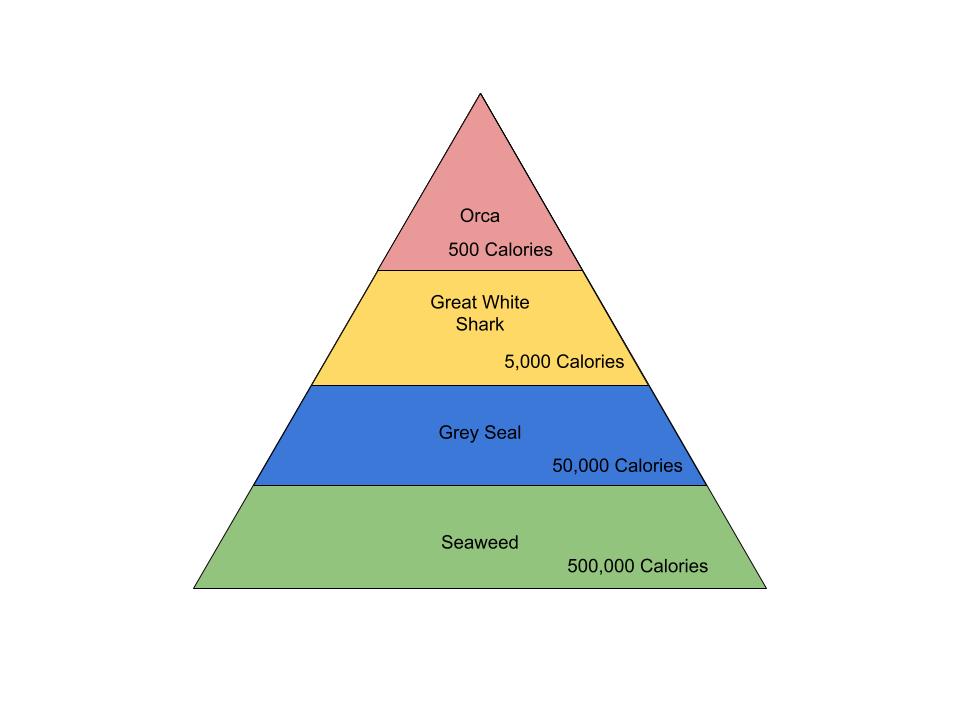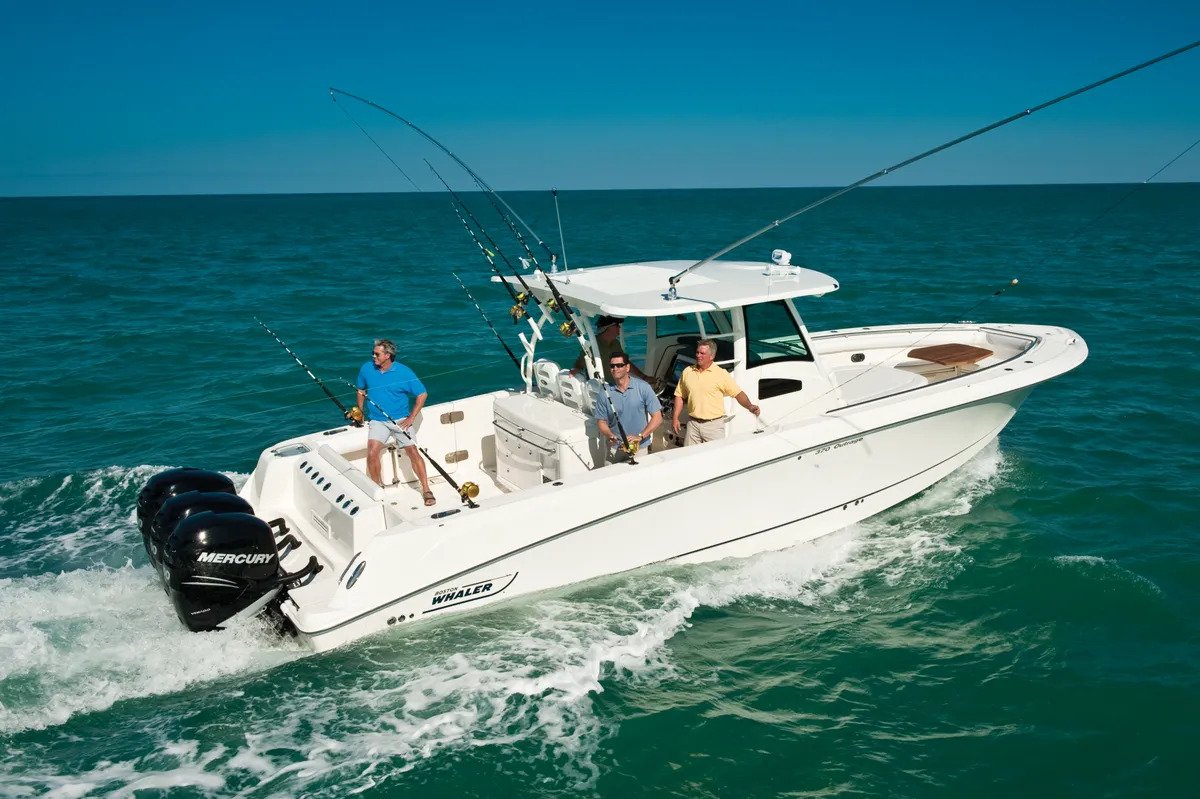Sharks and Tourism
Throughout the years, movies such as Jaws have portrayed great white sharks as even monsters out to get humans. This is far from the truth. In fact, humans are not even part of the great white shark diet.
Unfortunately areas like Cape Cod have been suffering due to rising concerns over shark attacks in recent years, with more shark attacks in the past 20 years than the previous 60 combined.
With the help of new technology, scientists are hopeful they can reduce the public fear of sharks without harming the north atlantic ecosystem.

Why are sharks so important?
Many ecosystems have one species that keeps the entire ecosystem together, we call these keystone species. Think of them like the keystone piece that prevents an arch from falling in on itself. Without the keystone species, the ecosystem would experience a trophic cascade.
The pyramid above is a simple diagram of a trophic pyramid. As you move up each level, only about 10% of the energy from the previous level is transfered. The rest of this energy is lost to processes like heating the body or just parts of the animal that are not eaten. Animals such as the great white limit the number of seals, which in turn limits the flow of energy between each level.
Trophic cascades are where the keystone species that regulates the population of species in lower trophic levels is removed. When the keystone species is removed the species it was regulating is able to reproduce and grow exponentially, outcompeting all other species until the ecosystem becomes a monoculture, where there is only one species in the ecosystem.

What happened to sharks and why are they reappearing in such massive numbers?
During the early 20th century, gray seals (a major part of the great white diet) were systematically hunted so there would be more fish for fisherman to catch. They nearly went extinct because of this, so a law called the Marine Mammal Protection Act was passed in 1972. It made the hunting of seals illegal in the United States. This increase in seal population has contributed to the increase of shark activity around Cape Cod.
Great white sharks were hunted extensively for their teeth, meat, fins, and more. Unfortunately, great white sharks were nearly hunted to extinction, so in 1997 and 2010 laws were passed completely banning recreational fishing of sharks and significantly limiting the commercial fishing of some species of shark, including the great white shark. The removal of these limiting factors allowed the shark population to recover, and now with stronger numbers they need more food, so they’re coming to a place with very large amounts of food such as Cape Cod.

Balancing Human and Ecosystem Needs
As much as it may seem like a good idea, we simply cannot kill all the great white sharks or gray seals. Killing the sharks would cause two things:
- The market for great white shark parts would completely fall apart, ruining many people's business, even if it is illegal.
- It would also cause a trophic cascade that would likely ruin the fishing market for much of New England because the seal population would skyrocket. This would result in much more fish being eaten by seals, decreasing the amount available to fishermen.
Similarly, killing all of the seals would remove a food source for great white sharks, potentially causing a population decline. Furthermore, seal watching is a major attraction at Cape Cod, so killing the seals would also harm the tourist industry.

Tracking and Preventions
There are a number of ongoing projects that are attempting to find ways to balance human and shark needs. Multiple teams are working to put tracking devices on sharks such as the scientist Greg Skomal and his team or the non-profit OCEARCH. Unfortunately, these systems only work when the shark surfaces at the top of the ocean, and since sharks do not need to surface for air, they do not need to surface very often. This makes them a poor solution for places like Cape Cod.
To combat this, scientists are experimenting with sonar and other underwater scanning technology. If devices like these were placed in a ring around where there are commonly swimmers, lifeguards and other safety personnel could watch for sharks on the sonar systems, and provide advance warnings to swimmers, minimizing the opportunities for conflict.
Works Cited
Marinemax. “Image of a Small Fishing Boat,” Marinemax.com, www.marinemax.com/-/media/images/marinemax/callouts/new-to-boating-manual-callout/offshore-fishing-boat-outrage-04092020.ashx?h=2662&w=4000&la=en&hash=342DAB388E125456B6072D7B1FAD121C. Accessed 2 Nov. 2022.
“Ocearch Shark Tracker.” Ocearch, www.ocearch.org/tracker/.
Snowbrains. “Image of a Great White Shark,” Snowbrains.com, 30 Jan. 2015, snowbrains.com/wp-content/uploads/2015/01/great-white-shark.jpg. Accessed 2 Nov. 2022.